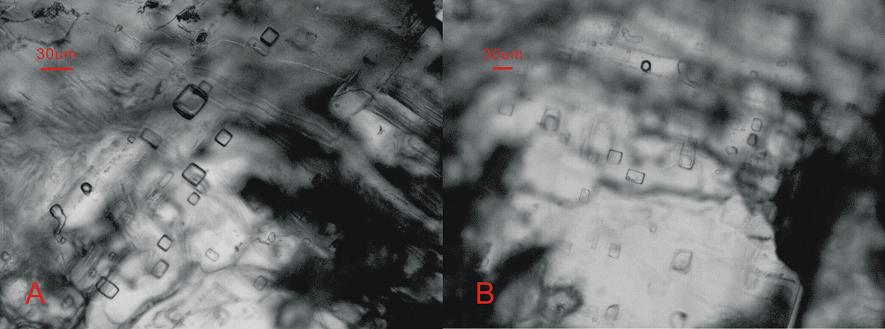
The primary fluid inclusions in Sinian halite of Sichuan Province,China
Ediacaran times prior to the “Cambrian Explosion” is a key interval in evolutionary history of multicellularity, with the advent of the Ediacara fauna. These organisms were probably the first that required higher atmospheric and dissolved marine oxygen for their sustainability.
The high seawater temperatures and salinity will limit the potential of dissolved oxygen, and therefore become an integral part of this evolutionary story. Previously, our understanding of seawater temperature during the terminal Neoproterozoic comes only from oxygen and silicon isotope ratios of a limited number of cherts. Indirect isotopic ratio methods for assessing seawater temperatures have a wide range of oscillation.
However, the oldest primary halites in the Ediacaran times can be found in Sichuan Province, China, which do preserve primary fluid inclusions for analysis via cooling nucleation methods. This method provide a direct and exact seawater temperatures.
Dr Meng Fanwei from Nanjing Institute of Geology and Palaeontology, Chinese Academy of Sciences, and other scientists form China and USA utilized Sinian halite samples from the Changning-2 well, correlative to the Dengying Formation (551–542 Ma), to provide a direct range of terminal Neoproterozoic seawater temperature. The temperature range is from 13.3 to 39.4±1.0 ℃ . The Neoproterozoic time also was a time of huge salt deposits in the geological times, allowed the seawater to accumulate more dissolved oxygen, and potentially paved the way for the evolutionary innovation of complex multicellularity.
The result of this research has be published on Precambrian Research.
Fanwei Meng et al., Ediacaran seawater temperature: evidence from inclusions of Sinian halite. Precambrian Research, Volume 184, Issues 1-4, January 2011, Pages 63-69.
